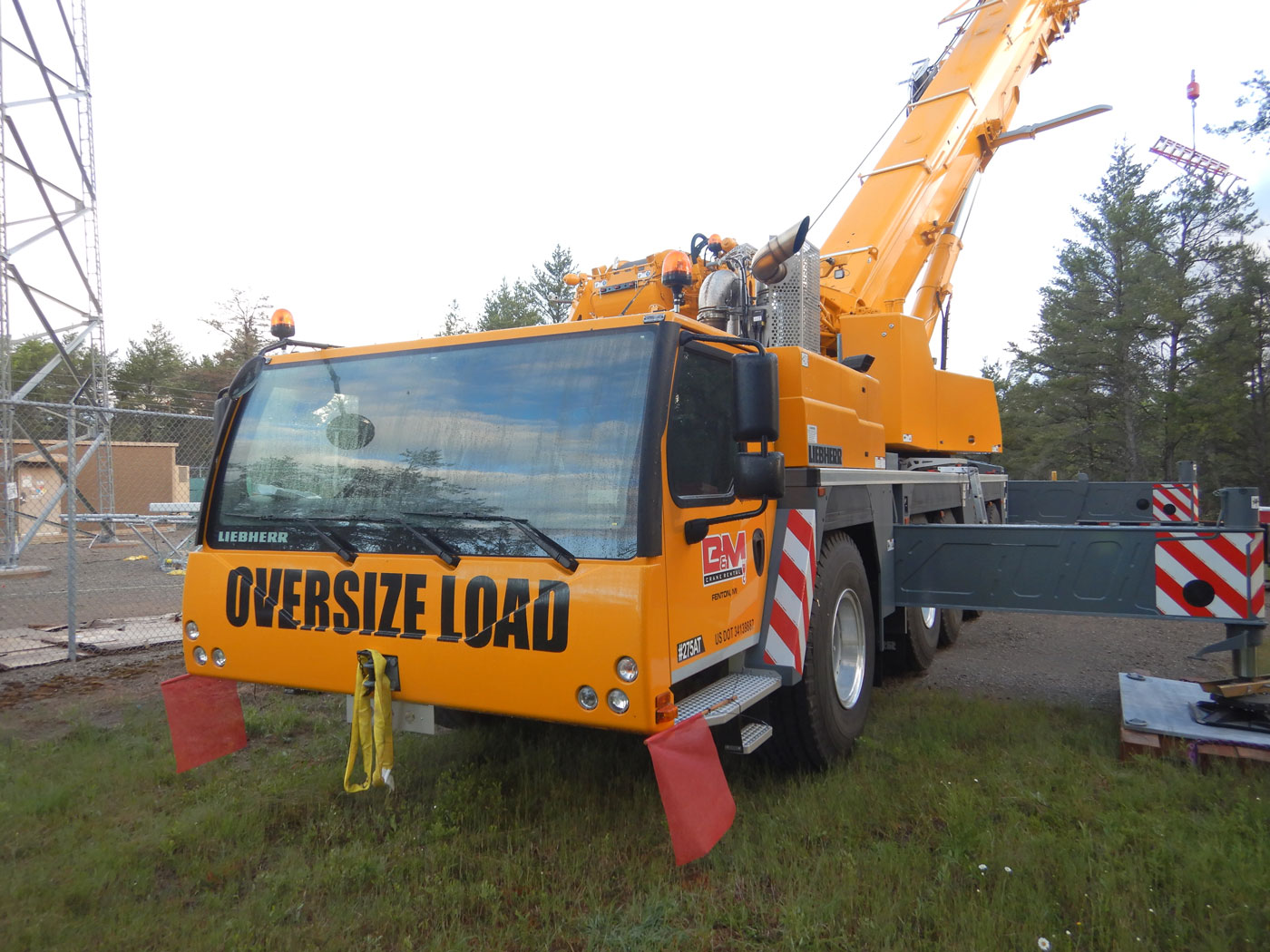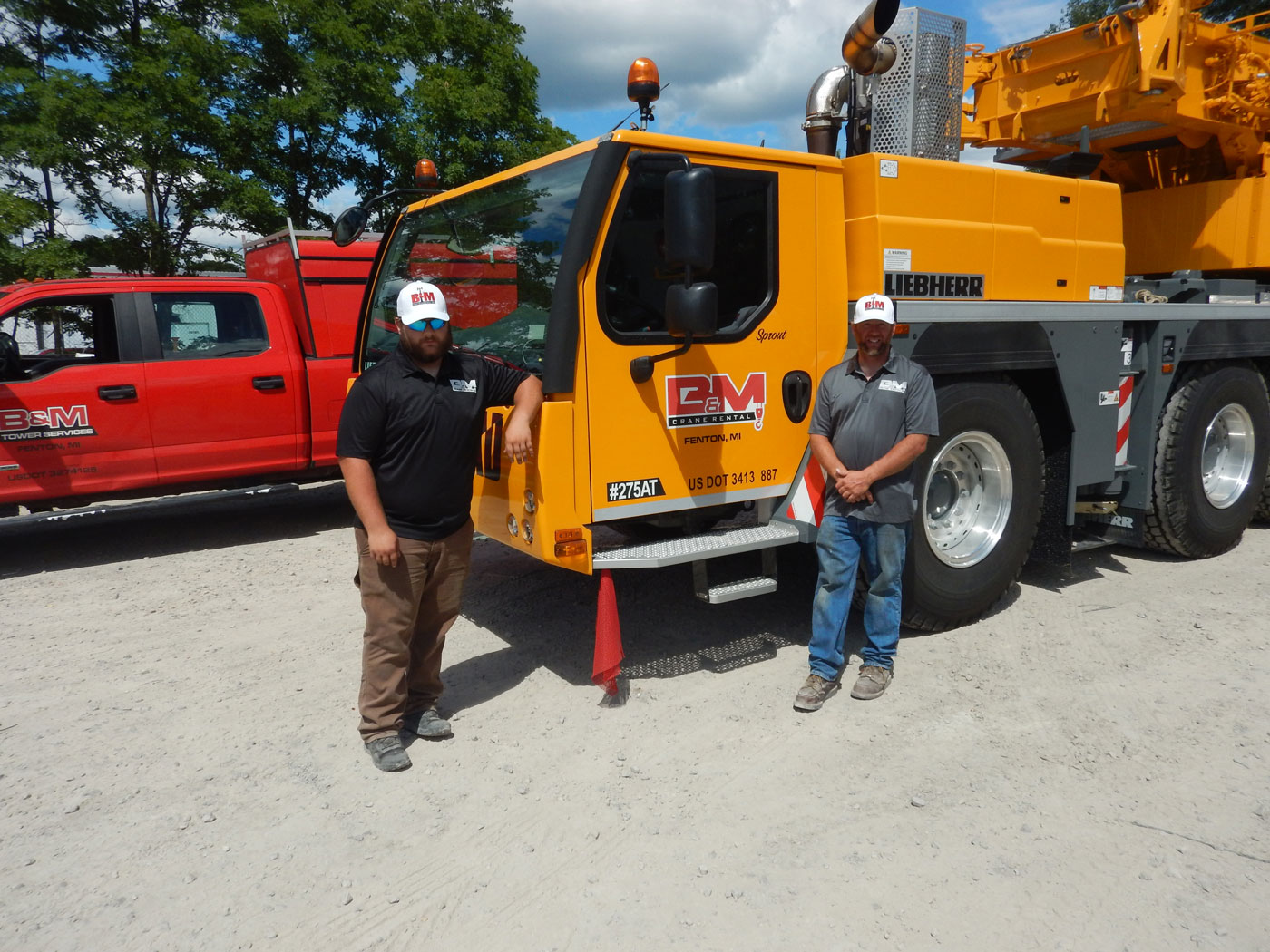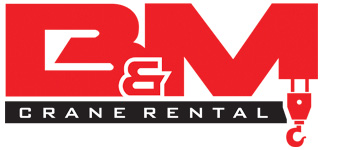Cranes are extremely useful machines to have around on your jobsite. Whether you work in maintenance and repair, construction, manufacturing, or another sector that requires heavy lifting, cranes have changed the way we build the world around us. Many people are familiar with the proverb, “with great power comes great responsibility” and cranes are no exception to this rule. There is plenty of room for error and accidents with cranes, which is why it is imperative that everyone who will be working around a crane is familiar with crane safety protocols. In this post, we are going to outline some safety precautions that you should follow when renting or even buying a crane in order to keep you and your employees safe on the job.

Equip Yourself With The Right Tools
One of the most basic but important tips that we have is to make sure that you are renting a crane that is designed to work for your specific project needs. This may sound like a no-brainer, but sometimes a contractor will push the boundaries of a crane’s ability in order to cut corners and avoid the rental costs of hiring another type of machine. This is absolutely a bad idea. Cranes are designed with specific environments and functions in mind, if you think you can push a crane to lift heavier loads, or work on rough terrain that it was not intended to drive on, you will certainly end up with an accident.
There are a number of factors that will impact your decision on which type of crane to rent. First, check the weight and type of load that you need to lift. You will need to look for a crane that has an adequate lifting capacity, as well as the ability to lift that specific material. You should take into consideration how far you will need to transport materials, both horizontally and vertically. Check the crane’s mobility and height specifications to guarantee that you will be able to move loads efficiently. Some cranes are actually able to self-erect, or grow, in relation to what you are building. For tall projects, it may be a good idea to look into these types of cranes. A last consideration is your work environment. Will your crane need to fit in between buildings in tight spaces? Is the terrain of the area smooth or rough and uneven? Is inclement weather a possibility? Once you have all these basics figured out, it may be a good idea to contact a crane rental company and see what type of machine they recommend. After all, the experts know best!
Inspect Your Site
Before your crane arrives on site, you want to make sure that everything in the environment is set up for success. If you are using a mobile crane that is not equipped to drive on rough terrain, make sure to use smaller construction machinery to level the ground before even bringing the crane on site. Another preparatory item to tick off of your list is clearing the area of any unneeded items. Any obstacles that your crane will have to maneuver around offer up potential for an accident, it is better to eliminate the possibility of a collision since cranes tend to have poor visibility from the operating cab. In addition to obstacles on the ground, look for objects up above that may cause problems for your crane. Are you near other buildings, telephone poles, or trees? Consider that these may interfere with your crane’s range of motion.
Only Hire Licensed Operators
Though you may want to hire friends, family, or just get a deal on an unlicensed operator, we highly recommend that you only work with licensed crane operators. Look for an operator who was licensed by an accredited institution and worked field hours in order to receive their license. We also recommend looking for an operator who is familiar with the specific type of crane that you are using since each crane type has its own idiosyncrasies. Licensed crane operators appreciate the importance of safety, and are often trained to do daily safety inspections before even turning on a crane to get the workday started. These safety habits are extremely important in avoiding workplace accidents and injuries.

Safety Culture On Site
Hiring a licensed operator will help to foster a safe work environment, but as the boss, you should also make sure to educate the rest of your employees on crane safety. Even for team members that will not be operating or working with cranes, you should debrief them on safety standards and emergency protocols. We recommend putting together a short safety seminar to educate all employees on how they should behave when a crane is on site. Your team should never work under a crane, and they should never hang out near a crane that is active.
Alongside with ensuring that your employees are up to date on safety standards, you should be checking that your crane is in good working condition as well. Refer to OSHA guidelines on how often you need to perform safety inspections on your crane. There are actually two types of crane inspections that you will need to follow. The first are called frequent inspections, which should be done daily or monthly according to your crane’s working conditions, and the other is called periodic inspections which need to be conducted annually or quarterly. Frequent inspections ensure that operating mechanisms, hydraulic and air systems, as well as hook and hoist chains of the crane are in good working order. For periodic inspections, the crane inspector will be focusing more on the electrical systems, load and wind indicators, as well as gasoline and diesel power plants. Periodic inspections are meant to gauge the wear and tear of a crane to see if you are falling behind on maintenance.
The frequency in which a crane requires inspection typically depends on the usage conditions. Normal service cranes may only need to be inspected annually, whereas severe service cranes could require daily inspections. Cranes working in manufacturing facilities, papermill machine rooms, or repair shops constitute as normal service cranes. Sites such as cement mills, lumber mills, fertilizer plants and shipping container handling are all categorized as severe service. If your crane is deemed unfit for service after an inspection, you should immediately shut it down. Continuing to work with a crane that is in need of new parts or any kind of maintenance is a recipe for disaster. It is never worth it to sacrifice the safety of your employees for rushing a job.
Use A Reputable Rental Company
If you are hiring cranes for your job, be sure to use a rental company that has a good reputation. You should look for a company that is willing to assist you in answering your questions to make sure that you are confident in how to use your crane safely. At B&M Tower, our founders began their careers as certified crane operators. From its inception, B&M has been committed to safety and efficiency. Our team has grown over the years to include a number of experienced and knowledgeable employees that are more than happy to assist you in all of your crane rental needs. Contact B&M today for more information!

